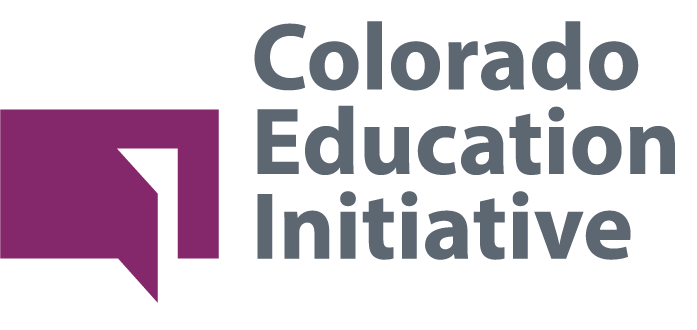Sensemaking Stimulus Funds with Colorado School Districts – What We’re Asking and What We’re Hearing
April 27, 2021
By Rebecca Holmes, CEI President and CEO
Like many of you, my team and I at CEI are paying close attention to updates about state and federal relief dollars and what they are likely to mean for Colorado students and communities in the coming years. As excited as we are for the unprecedented levels of one-time funding, we know new funds will only be as effective as the new structures and systems created to ignite breakthrough practices that sustain innovation beyond grant terms. These funds will come in times of unprecedented disengagement by the very students and families whose voices and experiences should matter most to inform their use, and of unprecedented burnout by the educators and other leaders who will be called upon to design breakthrough plans. Put more bluntly, money alone does not change mindsets or system behaviors.
And so along with our excitement, we have a lot of questions. What are districts’ greatest hopes and aspirations for American Rescue Plan Act Funds? What are their concerns and constraints about relief funds themselves or the narratives about them? How are district leaders thinking about the opportunity for relief funds to enable breakthrough innovation and sustainably disrupt inequity? Over the past month, we have spoken with over 40 leaders of school systems representing a diversity of pre- and post- pandemic conditions across Colorado to hear emerging best in class thinking about relief funds and most pressing urgent and long-term needs. A few important patterns are beginning to take shape that we are eager to follow, support, and share.
We should not assume relief funds will result in radical windfalls in every system demonstrating need.
While Title I districts with greatest need stand to receive significant funding, amounts are notably less significant for school districts with significant populations of students in poverty who do not meet Title I thresholds. Narratives that assume ubiquitous abundance of resources are misleading and unhelpful as the state gets a handle on how we might collectively maximize this moment to address unmet needs statewide. CEI partnered with The Education Trust to better understand what the American Rescue Plan Act of 2021 means for education equity – see here for their detailed explanation of Colorado funding allocations.
Many communities await meaningful student data to inform decisions.
As engagement and the nature of in-person vs. remote learning has varied greatly statewide, many schools and districts have uncertain enrollment data to anticipate budgetary impacts for next year. This uncertainty is compounded for systems experiencing increased mobility and for those still lacking useful interim assessment data in order to identify and anticipate greatest needs. As a result, districts may take more time to see their full budget picture and what enrollment looks like post-COVID. They may also need flexibility to maintain pre-COVID budget assumptions while these patterns stabilize. Across the country, a few models are emerging on how to serve families who, regardless of health conditions, don’t want to come back to full-time bricks and mortar school. Studying and replicating these will be key to meeting the needs of all learners.
Local leaders need space and support for student and family engagement to inform priorities and create plans.
There has been some confusion about when districts are required to release a plan for use of their funds, and which plans require public comment. Recent guidance suggests districts will have 60 days to produce plans, which would support a longer timeframe for intentional and authentic stakeholder engagement. CEI has been excited to support and learn from districts like Alamosa – who, in the throes of COVID emergency response last summer, invested time to talk with students and prioritize their feedback to create meaningful connection and relationships that extended throughout the school year. Particularly in the absence of reliable data on engagement, enrollment, course failure, and learning loss, districts will benefit from participatory processes with their communities and families to inform targeted innovation and improvement strategies – before deciding on their own how to spend their resources. Leaders who prioritize this work will go a long way to drive increased transparency of information from districts to families.
Breakthrough ideas will require thinking beyond programs.
To the degree this last year has exacerbated needs and shown spotlights on strengths for Colorado’s most vulnerable students and families, we should pause before investing significant resources in pre-existing programs that weren’t designed for, or haven’t been successful with, students facing multiple risk factors. We are hearing examples of leaders engaging students to rethink relevant and accessible course recovery; reimaging human capital to sustainably test and scale new teaching models; and designing data structures to enable organizational learning needed for long-term sustainability. In many ways, there’s never been a better time to redesign school to put relationships, whole child approaches, and human development at the center – we champion those with the combined bias to action and systems thinking to lead this charge.
CEI is committed to doing our part to support sensemaking around stimulus funds and ensure narratives about their use are informed by and reflect what’s true for districts and communities on the ground. So we’ll keep asking questions and sharing what we learn – including compelling examples from the field about your own engagement stories. We truly believe the coming year has the potential to be consequential for Colorado’s education systems, and are eager to listen, learn, and work alongside you in support of Colorado’s students to ensure it.
